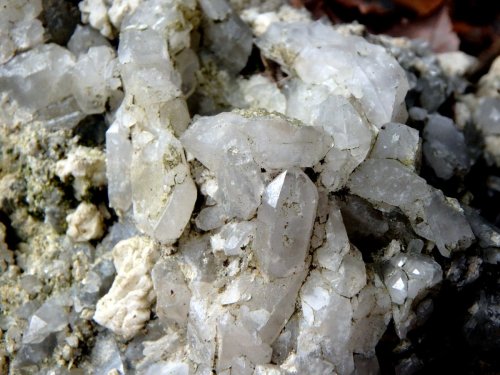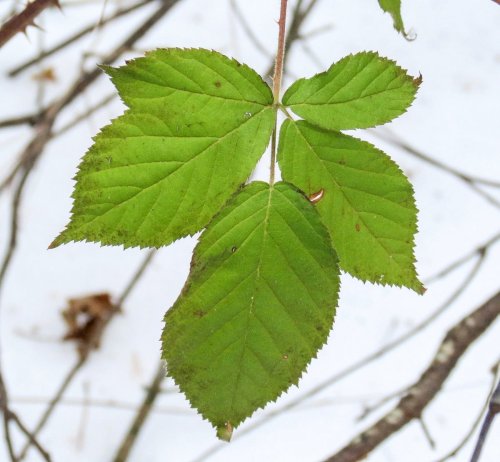Last Sunday dawned sunny and relatively warm (in the 40s,) so I decided to visit a rail trail that I’d never been on. Of course as soon as I reached it the clouds returned and that was the end of the sunshine for the day. As the photo shows this trail is paved; one of just a handful that are. It was a pleasure to not have to slip on ice or trudge through snow for a change, but I really prefer unpaved trails.
I don’t expect you to read these signs but they do contain interesting historical information so I’ve put them here for those who may be interested.
Poplar trees (Populus) are in the willow family and their hairy catkins remind me of spring pussy willows. North American poplars are divided into three main groups: the cottonwoods, the aspens, and the balsam poplars. If the buds aren’t sticky then the tree belongs in the aspen group. Those shown here weren’t. Aspen buds begin to swell during the first warm period in spring, when minimum temperatures are still below freezing. Air temperature rather than day length determines when their buds will break, so it can vary from year to year. I think this year they misjudged and opened early. These examples were very wet from the rain and snow that fell the day before.
Crispy tuft moss (Ulota crispa) grew on a tree trunk. This moss is very common on tree trunks in these parts and I see it all the time. When dry its leaves tighten and curl tightly, and that’s where the “crispy” part of its common name comes from. This clump was about an inch across. Most of them I see are quite small. This one seemed to have a bright inner light and it called me off the trail to enjoy its great beauty. Mosses are overlooked by many and that’s too bad because they can be remarkably beautiful. They are also everywhere, and very easy to find.
This beech tree was as big around as my leg and its twisted shape showed that it had been strangled by oriental bittersweet (Celastrus orbiculatus.) Luckily for the tree someone had cut the wire like vine away, but it will always be twisted.
Male hazel catkins (Corylus americana) are just starting to release their pollen. It pays to watch them develop because once they’ve started releasing pollen the tiny and rarely noticed female flowers will soon begin to blossom. During early to middle spring, the drooping catkins begin to swell and become longer and larger in diameter. Each male flower has two tiny bracts and 4 stamens. You can just see the yellowish stamens beginning to show on these examples.
The female hazel flowers open at the same time as the male flowers, or sometimes even a little sooner. As this poor photo shows, several of the hair like female flower stigmas can grow and bloom out of each small swollen bud. They are very small and always a photographic challenge. When pollinated by the wind each female blossom with become a small, sweet nut. The nuts were used by Native Americans to flavor soups, and other parts of the shrub were used medicinally.
I keep hoping that I’ll be able to show you what female speckled alder blossoms (Alnus incana) look like but this year the lingering cold is making them wary, as if they are afraid to bloom. You can just see hints of the tiny female stigmas as they poke out from under the bracts of the catkin, but at this point there should be enough to make them look quite shaggy. These flowers are even smaller than the female hazel blossoms in the previous photo; in fact I think they’re the smallest flower that I’ve ever taken a photo of.
This pedestrian bridge crosses over Beaver Brook and replaced the original railroad bridge that stood here. I used to see a side view of it every day, but this is the first time I’ve ever seen it from this angle.
Another sign tells of railroad and industry history in the area.
The reason I used to see the previous bridge from the side every day was because I used to stand on this one, which is slightly down stream. This is a private bridge which was once owned by the Kingsbury Corporation, a machine tool developer and builder. I worked here for a decade or so as a mechanical engineer and often stood on that bridge at break times. It’s hard to tell from the photo but Beaver Brook actually passes underneath the building, and when it floods so does the building.
Up there where the red brick stripes contrast with the concrete block was the engineering department. It had 50 seats and they were all full, night and day. The bottom fell out of the engineering and machine tool trades in this part of New England though, and now the land and buildings are up for sale.
Though I enjoyed my time at Kingsbury Corporation I sometimes wondered if the barbed wire was meant to keep people out or keep us in. It seemed to go both ways.
This tree looked to be trying very hard to escape…
…while this one just stood and watched.
Kingsbury started life as a small toy company in the 1800s and Kingsbury toys are prized by collectors today. As it evolved it grew to employ over 1,100 people in the U.S. and Canada. This chimney on the property is a familiar landmark in this part of town but it looks like it’s having a few problems.
One of the steel bands that help hold the chimney together has come loose, and I wonder if anyone knows. It’s on private property and nobody should be near it but there are plenty of ways in and I wouldn’t be surprised if teenagers and others walked right under this. Even if it isn’t repaired it should at least be taken down safely.
There were some nice birch groves along the trail. I don’t know if they were natural or planted by the city but they were very pretty. Most were paper birch (Betula papyrifera) but there were a few gray birch (Betula populifolia) mixed in. Not only did Native Americans use paper birch bark for canoes and wigwams but they also made hunting and fishing implements, along with buckets and other containers used for carrying, storage, and even for cooking food in. They were an essential part of native life and many tribes considered birch trees a sacred gift.
I’ve been looking for colorful turkey tail fungi (Trametes versicolor) all year and here they were the whole time. Turkey tails grow in nearly every state in the country and throughout Europe, Asia. and Russia. Their colors are described as buff, brown, cinnamon, and reddish brown, but “versicolor” means “having many colors” and I’ve seen purple, blue, orange and even pink. Turkey tail fungi have been used medicinally by the Chinese, Japanese, and Native Americans for thousands of years. Fueled by grants from the National Institute of Health, here in the U.S. scientists are researching its usefulness in breast and bone cancer therapy.
There was another grove of birches over across Water Street but I didn’t follow that section of the trail because from here it’s just a short walk to downtown Keene. As I turned around I found myself wishing that I had walked this rail trail years ago when I worked for Kingsbury. I saw many things that I didn’t know were here and the things I knew were here I saw from a different perspective. It was an enjoyable walk.
One who returns to a place sees it with new eyes. Although the place may not have changed, the viewer inevitably has. For the first time things invisible before become suddenly visible. ~Louis L’Amour
Thanks for stopping in. Happy April!













































































































